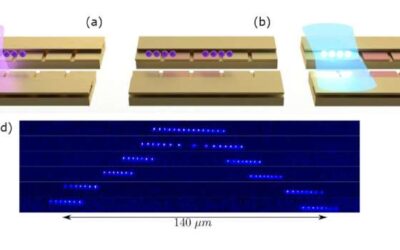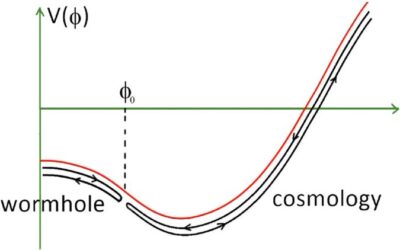Non-perturbative interactions (i.e., interactions too strong to be described by so-called perturbation theory) between light and matter have been the topic of numerous research studies. Yet the role that quantum properties of light play in these interactions and the...
Quantum Physics
LHCb collaboration observes a doubly charged tetraquark and its neutral partner for the first time
The observation of elusive, exotic particles is the key objective of countless studies, as it could open new avenues for research, while also improving present knowledge of the matter contained in the universe and its underlying physics. The quark model, a theoretical...
A new protocol to reliably demonstrate quantum computational advantage
Quantum computers, devices that perform computations by exploiting quantum mechanical phenomena, have the potential to outperform classical computers on some tasks and optimization problems. In recent years, research teams at both academic institutions and IT...
Study demonstrates many-body chemical reactions in a quantum degenerate gas
In recent years, physicists have been trying to attain the control of chemical reactions in the quantum degenerate regime, where de Broglie wavelength of particles becomes comparable to the spacing between them. Theoretical predictions suggest that many-body reactions...
Research team synchronizes single photons using an atomic quantum memory
A long-standing challenge in the field of quantum physics is the efficient synchronization of individual and independently generated photons (i.e., light particles). Realizing this would have crucial implications for quantum information processing that relies on...
A quantum radar that outperforms classical radar by 20%
Quantum technologies, a wide range of devices that operate by leveraging the principles of quantum mechanics, could significantly outperform classical devices on some tasks. Physicists and engineers worldwide have thus been working hard to achieve this long-sought...
A solid-state quantum microscope that controls the wave functions of atomic quantum dots in silicon
Over the past decades, physicists and engineers have been trying to develop various technologies that leverage quantum mechanical effects, including quantum microscopes. These are microscopy tools that can be used to study the properties of quantum particles and...
A quantum Szilard engine that can achieve two-level system hyperpolarization
Quantum computers, machines that perform computations exploiting quantum mechanical phenomena, could eventually outperform classical computers on some tasks, by utilizing quantum mechanical resources such as state superpositions and entanglement. However, the quantum...
Could quantum gravity models arising from holography explain cosmological acceleration?
Theoretical physicists have long been trying to devise a complete theory of gravity that would also account for quantum mechanics phenomena, as existing models do not. Such a theory could collectively explain the many intricate physical and cosmological phenomena...
An optical method to polarize free electrons in a laboratory setting
Polarized electrons are electrons in which spins have a "preferred" orientation or are preferentially oriented in a specific direction. The realization of these electrons has notable implications for physics research, as it can pave the way toward the creation of...










